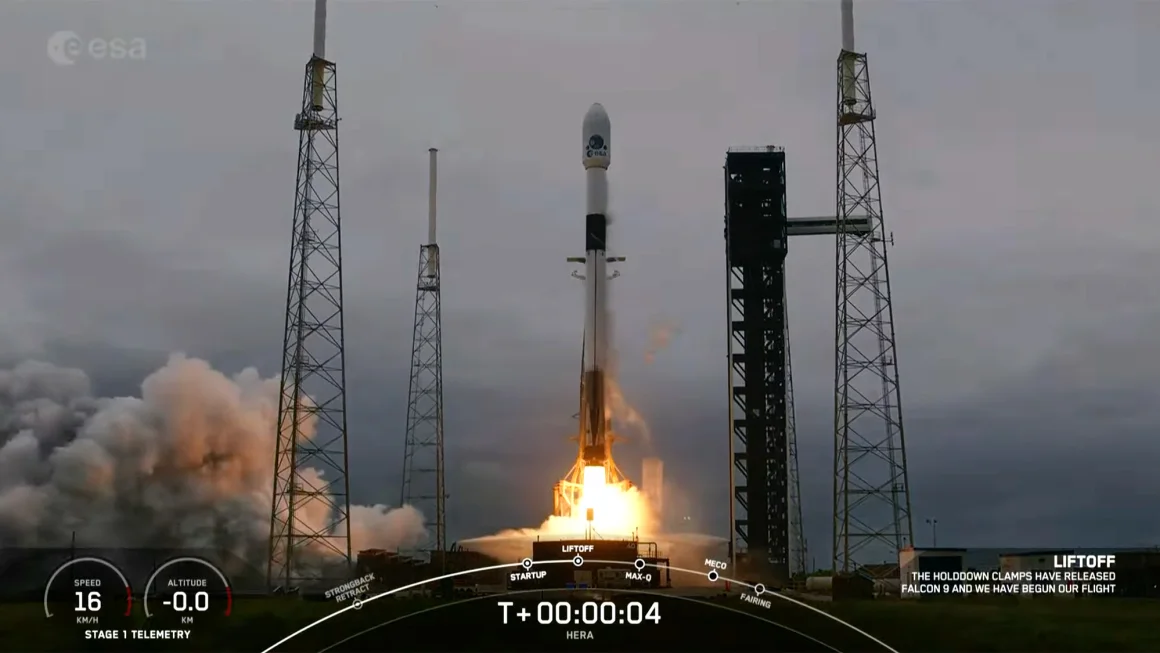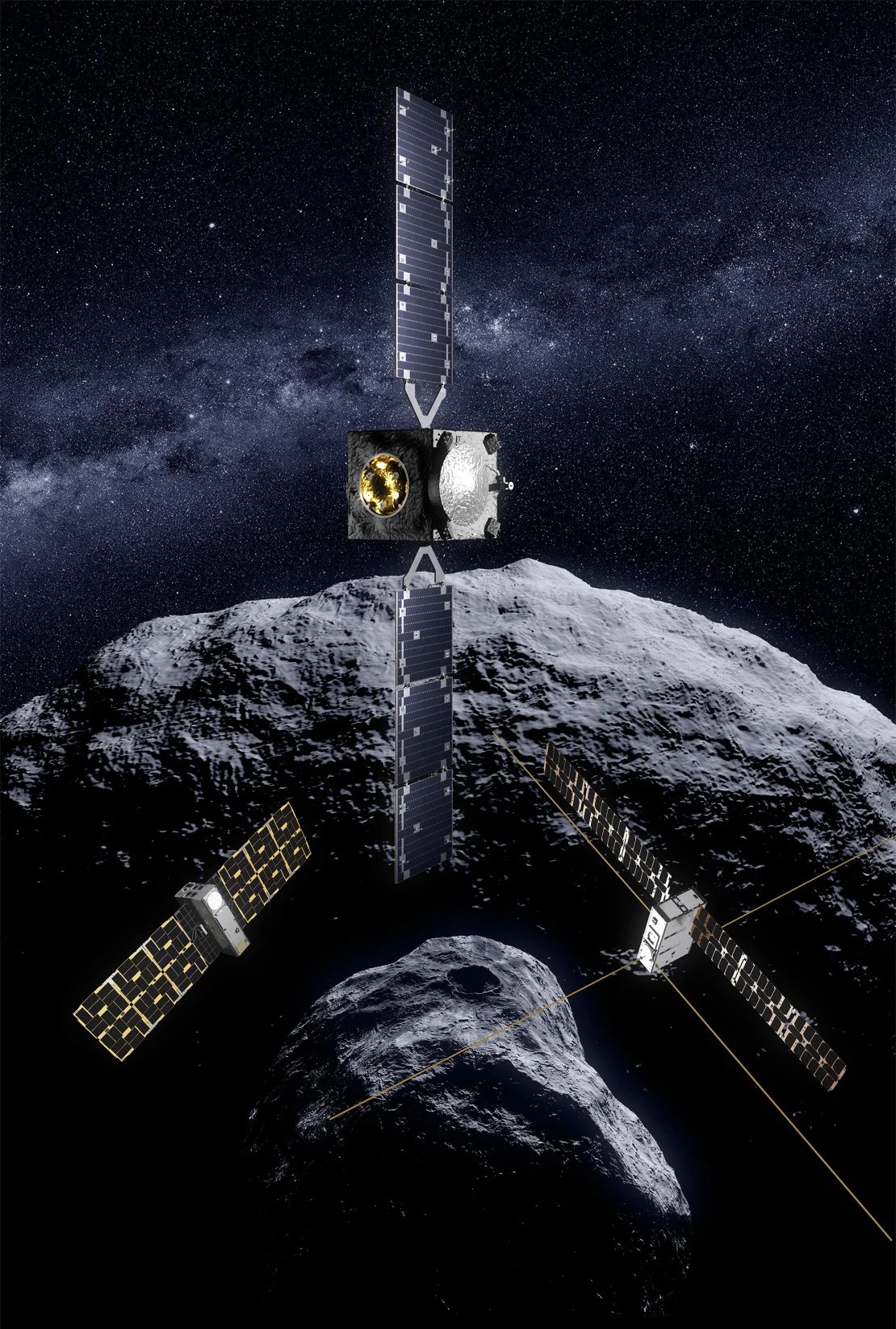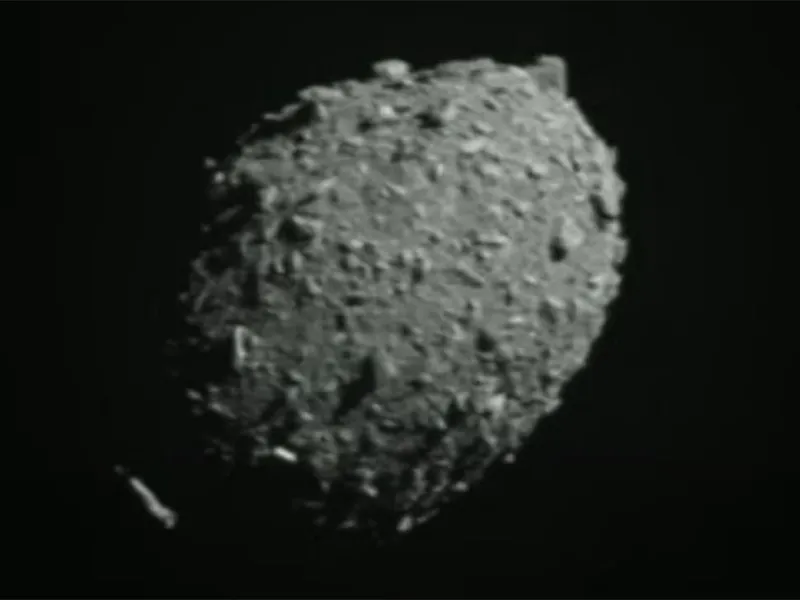
The European space agency has launched the HERA mission to the asteroid Dimorphos, the orbiting moonlet of a binary asteroid system known as Didymos. The HERA probe was launched atop SpaceX’s Falcon 9 rocket from Cape Canaveral Space Force Station, Florida, on October 7 at 10:52 am EDT.
The HERA mission is ESA’s contribution to the international planetary defense effort and a part of the Asteroid Impact and Deflection Assessment (AIDA) collaboration. ESA calls this mission “A crash site investigation” i.e. the mission aims to study the aftermath of the impact of NASA’s DART mission on the asteroid that struck past Earth 2 years ago!
The DART spacecraft intentionally crashed into the small moonlet Dimorphos of the asteroid Didymos in 2022 to study the change in its trajectory after the collision. The HERA mission marks a significant step in the field of planetary defense, as it will play an important role in developing planetary defense systems to protect Earth in case of a possible asteroid collision.
The DART mission launched on Nov. 23, 2021, aboard a SpaceX Falcon 9 rocket from Vandenberg Space Force Base in California was the first-ever mission that demonstrated one method of asteroid deflection by collision.
The DART mission was successful when it impacted the asteroid Dimorphos on Sept. 26, 2022, at a little over 6 kilometers per second, reducing its velocity by 2.7 millimeters per second and thus, over time, changing its orbit around the Sun.
How will the HERA Probe study asteroid Dimorphos?

The HERA probe built by ESA, costing around €363 million (US $398 million), is an automobile-sized probe measuring around 1.6 m across and flanked by twin 5-m solar wings. It is equipped with high-tech technology that will conduct a detailed survey of the aftereffects of the DART mission impact on asteroid Dimorphos.
The Probe carries 2 CubeSats named Milani and Juventas. The Milani CubeSat, developed by Italian industry led by Tyvak International, will survey the mineral makeup of Dimorphos and its surrounding dust, and the Juventas CubeSat, produced by a Luxembourg-led consortium under GOMspace, will perform the first subsurface radar probe of an asteroid.
The HERA spacecraft will release these CubeSats after 6 weeks of the survey. After that, HERA will continue to observe by flying near the impact crater on Dimorphos, getting as close as 1 kilometer from the surface. Finally, it will try out an experimental landing on Dimorphos, which will end the mission.
The CubeSats may also attempt similar landings. Although no spacecraft is made to land, they will slow down enough to use cameras and some instruments on the asteroid’s surface, as CNN reported.
The spacecraft will also test its self-driving technology and navigate around the asteroid using visual tracking systems.
Before reaching Dimorphos in 2026, the spacecraft will first swing by Mars in 2026 for extra momentum, which will help reach Dimorphos and Didymos by 2026. During this flyby, the probe will also observe Deimos, which is one of Mars’s two moons, from a distance of 1,000 kilometers.
Why did scientists choose Dimorphos and Didymos?

Asteroid Dimorphos is a near-earth asteroid that is not an immediate threat to the Earth. NASA and other global space agencies play a crucial role in planetary defense by tracking and studying such celestial bodies. Asteroid flybys are pretty frequent. One of the recent asteroid flybys was in August and September when asteroid 2020 RL and four other asteroids flew past Earth.
The asteroid Dimorphos is part of a binary asteroid system orbiting a larger asteroid Didymos. This binary configuration makes it easier for scientists to study the impact of deflection techniques and observe any alteration in the Dimorphos orbit around the Didymos.
Asteroid Dimorphos is roughly 160 meters wide. This size of an asteroid is a threat to Earth; thus, testing deflection techniques on such an asteroid can help develop realistic planetary defense strategies.
After the successful impact of NASA’s DART mission on this asteroid in 2022, ESA’s HERA mission aims to follow up on this collision, studying the impact crater, measuring changes in the orbit, and gathering more data on the physical properties of Dimorphos.
Mission timeline
- The HERA mission was launched on October 7 from Cape Canaveral Space Force Station in Florida.
- It will arrive at the binary asteroid system in 2026 after 2 years of cruise and will be 121 million miles (nearly 195 million kilometers) away from Earth.



